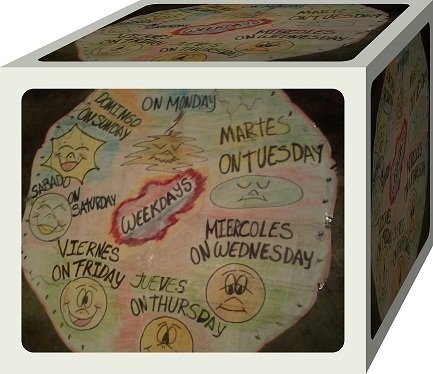"The nature of God is a circle whose center is everywhere and circumference nowhere.
"Empedocles."

The circle represents eternity and therefore the divine essence, so it is not surprising that nature makes use of this form to manifest itself.
A mandala (or circle in Sanskrit) is a symbol formed, generally, by geometric figures, in some cases enclosed in a circle or have one within its composition. They give the sensation of a whole, of a unified whole and tend to center our visual focus by directing it from the inside out.
Mandalas contain a set of codified information captured by the subconscious and whose elements are a representation of something that allow us to focus on a specific idea, as in meditation that seeks to achieve with the visualization of a Mandala to create the feeling of serenity, balance, security, peace, stillness, attention or concentration as the case may be.
Based on the above, we can assume that a mandala can be a very elaborate figure but it can also be composed of very simple shapes such as triangles, six-pointed stars, lines or simple strokes that allow us to distribute the spaces to fix information inside.
Understanding the above, we can create our own "coded" mandalas with information related to learning topics, by means of seriation, superposition of shapes, or coupling of elements, trying to maintain order and balance, as previously mentioned, dividing the spaces inside the circle, spaces that will serve to place our "codes" (keywords) about the information we want to keep inside.
Our Mandala will represent a general idea or several ideas in a circular set, it can be constituted by several elements as a conceptual, mental or mixed map, hence signs and symbols are used according to the subject to be treated organizing the words in a coherent, simple and punctual way, for this the circle is divided as many times as words are necessary for
To make ourselves understood, hence we make use of geometric figures to divide the spaces, giving rise to a set of words organized with the help of the geometry of the set, thus building the ideas or group of ideas that we want to inscribe within the mandala around the topic to be discussed. It should be noted that everything must go inside the circle and nothing can go outside of it so that the mind groups everything in a single set and does not disperse.
Starting from the idea of concentric circles and harmonic forms within them and the approach that can be given to the use of mandalas in English classes, specifically, from an artistic dynamic, is how I make use of the "mandalas" as a means to graph and conceptualize my ideas, a strategy that I like to use in my classes with students.
An example of this is that I built a mandala to explain the days of the week in English using a striking and cheerful material that I developed for that topic, the idea was to generate a visual impact on students by showing bright colors with circular images representing faces that reflected an emotional state that changes as the days go by (which can also explain the moods). These circles or faces were inscribed within a larger circle, each representing the days of the week.
This same technique was used, but more focused on "concentric" circles, to explain the past tense of the verb TO-BE. The format is the same: contents inscribed in a circle, in this case, without images but with lots of color.
In the end, the use of mandalas to express ideas and capture knowledge is similar to that of ordinary concept maps, only in a circular format whose shape penetrates more into the psyche than the mental and concept maps we know, since the circular shape gives it more dynamism and captures the attention from its elaboration, when students are invited to elaborate them or as a learning strategy.

In a future post I will give more examples of how I have used this idea as a teaching-learning tool in other areas.
Thank you my dear steemers for coming this far. If you liked the content support me with your vote. See you next time.
Article written by: Nadia Padrón (@hojaraskita)
It is a different and original way of expressing ideas, but if this way penetrates more into the minds of young people so that they can learn more easily, so much the better.
Downvoting a post can decrease pending rewards and make it less visible. Common reasons:
Submit